DGCA alters the Digi-Yatra program; enables self-registration for touchless travel
Radhika Bansal
23 Apr 2022
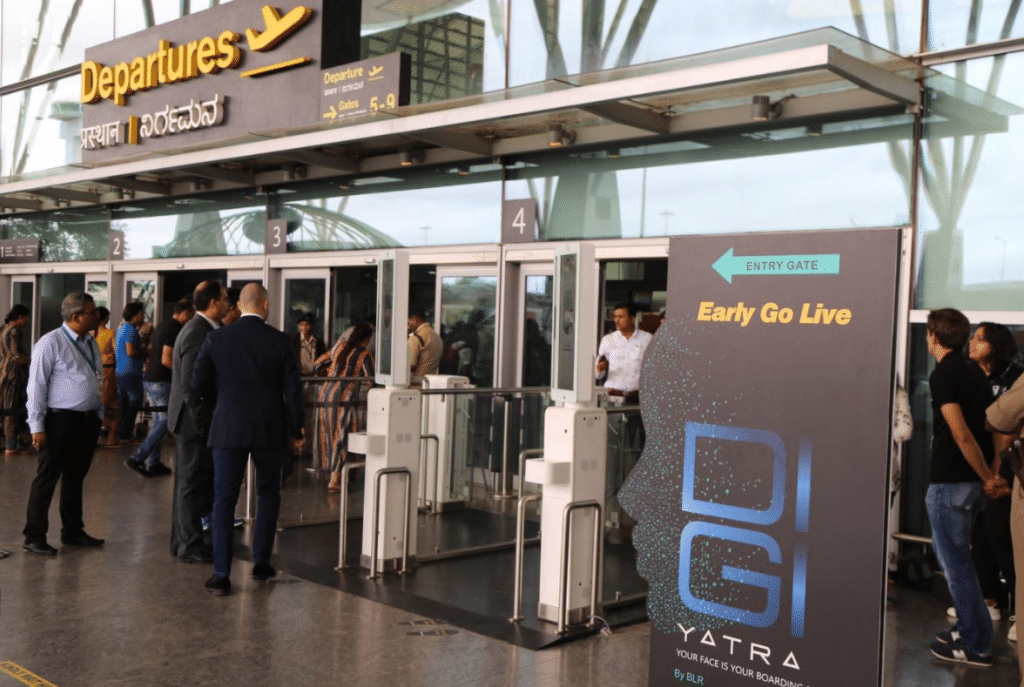
In wake of the pandemic, the government has altered the process to register for Digi-Yatra (DY) program that will eventually allow paperless air travel for passengers. Under the new process, people can enrol by digitally validating a government-issued I card like Aadhaar or a driving licence.
“Passengers can create a DY credential with identity data, travel data and if needed even health data. All these data points are tagged to the single token face biometric of the passenger,” says a notification on “implementation of e-boarding process (DY)” issued by the Directorate General of Civil Aviation (DGCA) on April 18, 2022.
Manual processes that exist today for check-in shall remain even after the much-delayed DY gets implemented, which has been delayed by the pandemic. DY will be available to both Indian and foreign travellers.
DGCA alters the Digi-Yatra program; enables self-registration for touchless travel
“The DY credentials would be created using self-service mode by the passenger with a government of India identity that is possible to be validated digitally. Right now, Aadhaar and a driving licence are options available. Others like passport e-passport will be subsequently added in the future,” it says.
In case there is an issue with this self-registration, the originally pre-pandemic time envisaged procedure of registering for the first time at airport registration kiosks will remain available.
In such cases “a one-time ID check and face biometric capture will be done at airport registration kiosk by the passenger at a DY-enabled departing airport. In the authentication process, passenger’s ID will be verified and validated by an authorised security officer (of CISF) and activate DY credentials.”
The Directorate General of Civil Aviation has to video Aeronautical Information Circular 9 of 2022 modified the E-Boarding Process (Digi Yatra)
The DY credentials will be encrypted and stored in a secure Walter on the passenger’s smartphone. The data will not be centrally stored to minimise the risk of theft or loss.
“DY credentials are shared only when travel happens and shared with passengers’ consent (by him/her) with… airlines, airports and regulatory agencies if needed,” the DGCA order says.
Such data will be shared 24 hours before flight departure time and retained for 24 hours after the same, following which it will be purged from the system. Airports, airlines and their travel agents will be responsible for complying with these requirements.
It applies to all scheduled airlines and airports in India to enable inter alia, passengers to enrol into the Digi Yatra ecosystem
Airlines will be required to make a provision for creating and receiving DY credentials of passengers when they book tickets through any platform “for domestic travel and in future for international travel… this implementation will be done in a phased manner.”
Airlines will share passenger data with the DY biometric boarding system of airport operators at least six hours before flight departure time on a secure line for ticket and ID validation.
Read next
Private airliner Go First, formerly known as GoAir, has become the first airline to receive approval from the Airports Authority of India for night parking at Srinagar as well as Jammu airports, officials said on Friday, April 22.
Lieutenant Governor Manoj Sinha launched the night parking facility at the airports on Thursday, April 21. This provision will ensure late night and early morning take-offs from the two airports. This will allow one Airbus A320neo aircraft to be parked at Jammu airport.
Go First gets approval for night parking at Srinagar Airport from AAI
This is a significant development for the union territory as the night parking permission will facilitate better flight operations from the region, a Go First spokesman said.
"We would like to thank the authorities for their kind consideration and will continue our commitment to the development of Jammu and Kashmir.Go First operated the first night flight from Jammu following its successful operations of the first night flight from Srinagar.Go First is the only airline appointed for the cargo movement of horticultural perishable and agricultural produce of the Jammu and Kashmir Horticulture Products, a state-owned company."Kaushik Khona, Chief Executive Officer, Go First
Speaking at the launch event, Sinha said the initiative will ease air travelling with a multiplier effect on the hospitality industry.
The new beginning reflects our commitment to strengthening connectivity and fulfilling the mobility needs of the people. The initiative will make travelling effortless for those looking for single-day travel. The Lieutenant Governor said despite COVID-19, the Jammu and Srinagar airports had achieved new records.
ALSO READ - Srinagar airport registers a record number of passengers with 102 flights in 24 hours
This will allow one Airbus A320neo aircraft to be parked at Jammu airport
In March 2021, 1,030 flight operations were recorded at the Jammu airport and more than one lakh passengers travelled. This number soared to 1,346 flights and roughly 1.55 lakh passengers, he said.
Established in 2005 and wholly owned by the Wadia Group, Go First is an ultra-low-cost carrier based at Chhatrapati Shivaji International Airport in Mumbai with a secondary hub at Indira Gandhi International Airport in New Delhi.
The carrier operates an extensive network of domestic services within India using Airbus A320 family aircraft. GoAir officially rebranded as Go First in May 2021.
Read next
Jyotiraditya Scindia working with more states to reduce VAT on ATF and bring it under GST
Radhika Bansal
23 Apr 2022
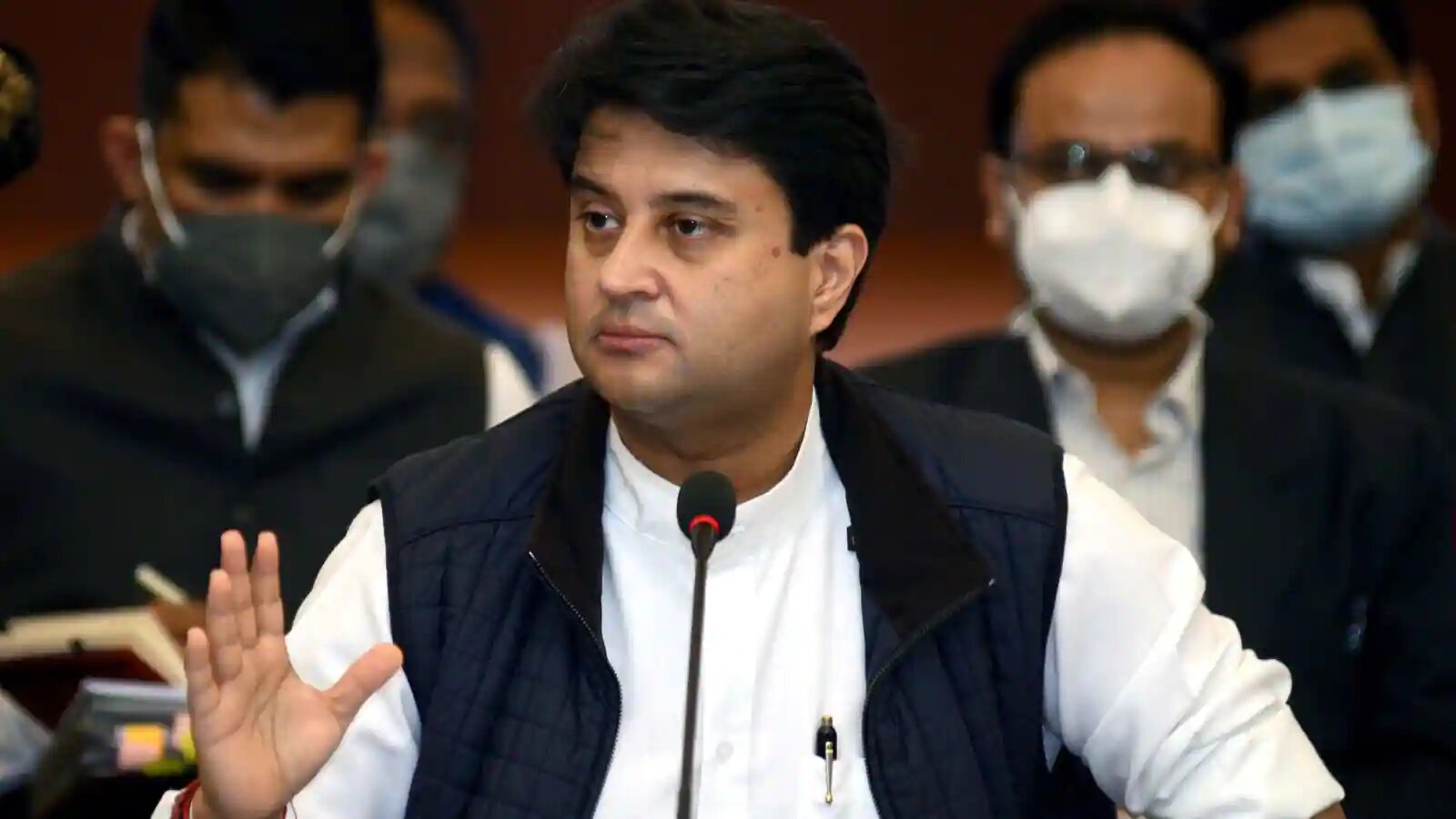
Civil aviation minister Jyotiraditya Scindia said a dozen states that have not reduced VAT on jet fuel are being nudged to lower levies and backed bringing the commodity under the GST umbrella.
Indian carriers have been grappling with high aviation turbine fuel as several opposition-ruled states maintain high VAT, ranging between 20% and 30%. Jet fuel accounts for 40% of an airline’s working prices.
Jyotiraditya Scindia working with more states to reduce VAT on ATF and bring it under GST
While laying out the flight path for the Indian aviation sector at the Times Network India Economic Conclave, Scindia candidly admitted the sharp hike in ATF prices has been causing stress to Indian airlines (which have lost USD 2.9 billion during the pandemic).
Scindia stated that whereas jet gas is now 5 instances larger than what it was two years in the past he has been working to ease the tax burden.
“There has been a phenomenal rise in jet fuel prices. They are up by 60-70% in the past few months. They have risen five-fold in the last two years. We hope that the hike in oil prices (caused by the war in Ukraine) is transient. While in the long run, it will be better to have ATF under GST as that gives input tax credit, in the interim, I am requesting states to lower VAT on jet fuel.” Jyotiraditya Scindia, UNion Minister for Civil Aviation
He said several policy decisions have been taken to revive the sector. “We have seen a very healthy bounce-back in recent days in the number of domestic air travellers. Regular international air flights were allowed to resume from March-end,” he said.
Domestic fare caps will remain for now as “there is not a single unified voice” (from airlines about their removal). “We have to balance the interest of passengers from very high spot fares and of airlines from very low (below-cost or predatory) fares. At the right time, a decision will be taken on fare caps.”
India will see an investment of INR 98,000 crore by private airport operators and the state-run Airports Authority of India over the next four years
ALSO READ - Indian aviation sector to see investments worth NR 98,000 crore over next 4 years
He said India will see an investment of INR 98,000 crore by private airport operators and the state-run Airports Authority of India over the next four years, which will take the number of operational airports from 141 to over 200 by 2025-26. Two new airlines, Akasa and Jet-II, should start flying by next March.
Further, he said merging Air India and Indian Airlines in 2007 under the UPA was a “fatal mistake”. “Till 2005-06, as separate entities both AI and IA were profitable. They were culturally very different organisations with different purposes. The (2007) merger was destined for disaster.
Read next
Indian aviation sector to see investments worth NR 98,000 crore over next 4 years
Radhika Bansal
22 Apr 2022
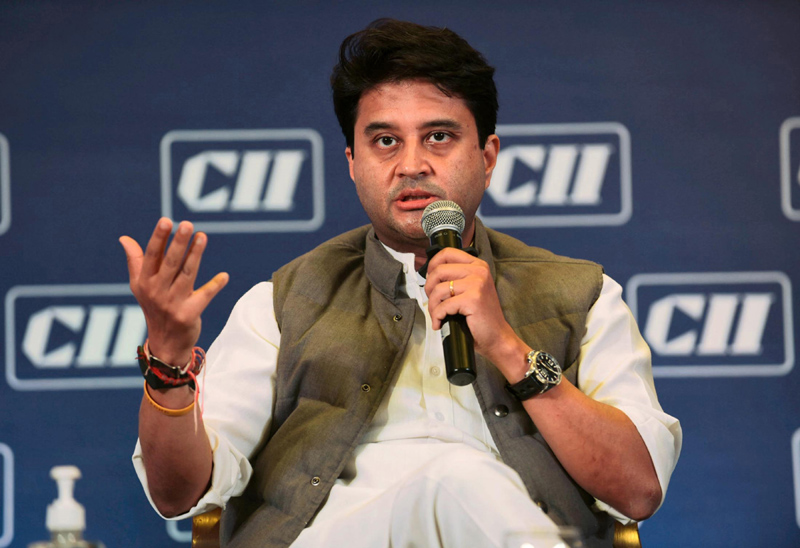
The civil aviation sector, which was significantly hit by the coronavirus pandemic, is on the recovery path and domestic passenger traffic is slowly touching the pre-pandemic levels. On April 17, the domestic air passenger traffic crossed the 4 lakh mark for the first time in two years.
The country's airport sector is expected to see investments worth INR 1.65 lakh crore, including from private players, in the coming years, and the government also aims to have 200 airports, Civil Aviation Minister Jyotiraditya Scindia said on Thursday, April 21.
Indian aviation sector to see investments worth NR 98,000 crore over next 4 years
About capital expenditure plans, Scindia said, "we have a plan of close to INR 98,000 crore over the next four years to be deployed in the area of airports alone".
Out of the total amount, INR 25,000 crore would be from the Airports Authority of India (AAI) and INR 22,000 crore would be for the expansion of airports and the building of new terminals.
The non-public sector is predicted to spend INR 67,000 crore on the seven privately run airports aside from greenfield initiatives in Navi Mumbai, Goa and Greater Noida.
The non-public sector is predicted to spend INR 67,000 crore on the seven privately run airports aside from greenfield initiatives in Navi Mumbai, Goa and Greater Noida.
Emphasising that rapid expansion is going to take place, the minister said the plan is to have close to 200 airports in the country. The largest airports in India will add a passenger dealing with capability of 250 million in the following few years, he added.
"We had 74 airports before 2014 in 70 years of India's independence and the last 8 years, we have built 67 airports... it is my intention, by the way, to take it close to 200 airports in India, and therefore you want to see a rapid expansion of airport infrastructure networks," he noted.
Further, Scindia mentioned a new policy for smaller aircraft to encourage regional transport aircraft and helicopters and seaplanes.
INR 25,000 crore would be from the Airports Authority of India (AAI) and INR 22,000 crore would be for the expansion of airports and the building of new terminals
"So, I want to connect the last mile, there's enough of connectivity coming in from international metros to metros domestically but I want to connect tier 2 to 3 cities to metros and each other. So, I am looking at a very, very aggressive plan over the next three to four years," he said.
Amid the high growth potential in the country's aviation space, a new airline Akasa is expected to take to the skies in the coming months and the now-shuttered Jet Airways is also anticipated to restart operations.
Akasa and Jet Airways are expected to start operations before the end of this financial year, the minister said. In March, around 1.06 crore domestic passengers travelled by air, as per official data.
Read next
Boeing highlights F/A-18 Super Hornet Block III capabilities to Indian Navy
Radhika Bansal
22 Apr 2022
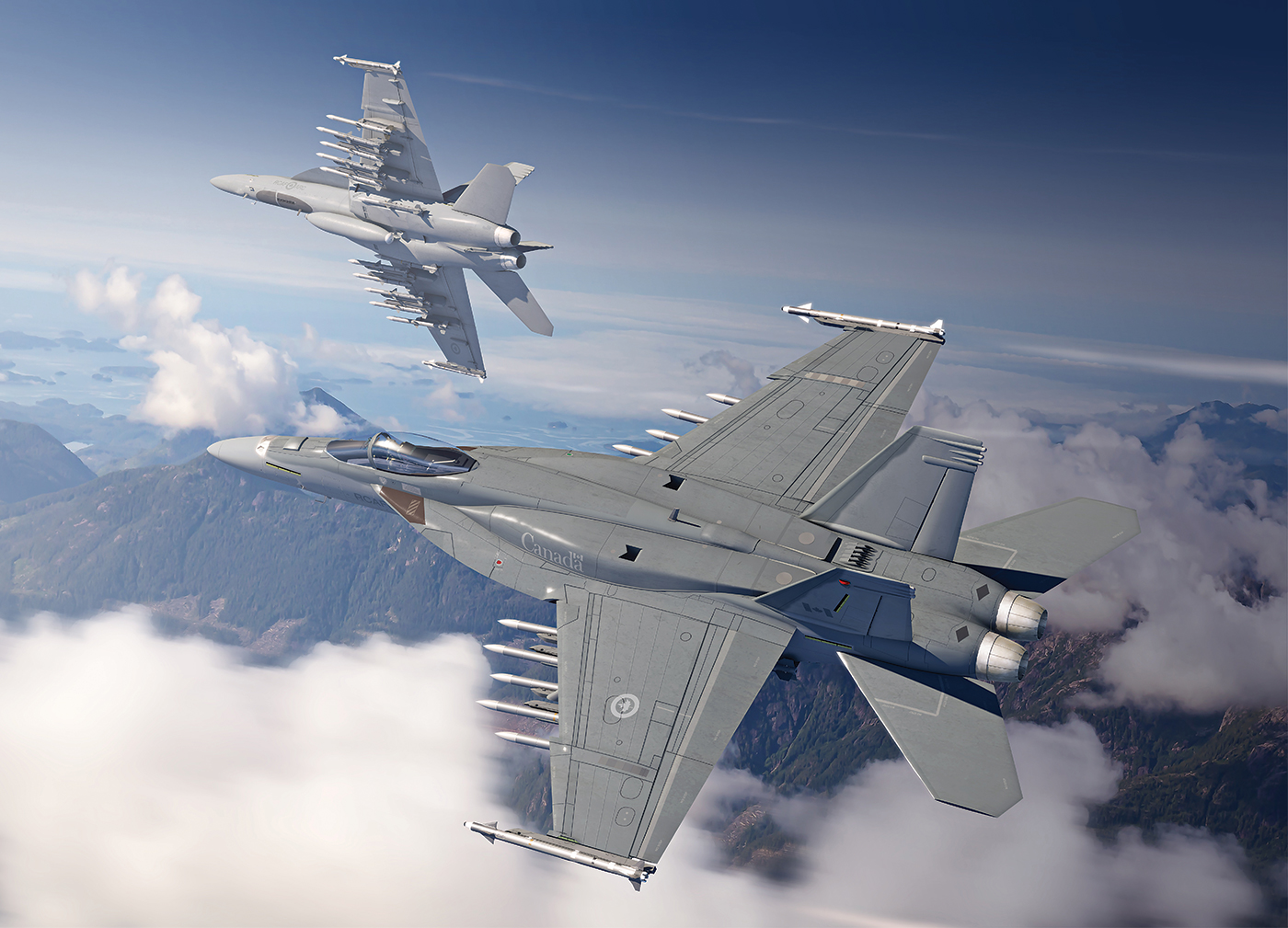
Boeing is planning to fly two Super Hornet fighter jets to Goa this summer for operational demonstrations before its potential buyer the Indian Navy, according to a senior company executive.
Making a strong pitch for F/A-18 Super Hornet, vice president of Boeing's India Business Development Alain Garcia said the aircraft has been specifically designed from its inception for carrier operations, can operate from the Indian Navy aircraft carriers and will meet or exceed the STOBAR performance requirements of the Indian Navy.
"This has been proven by our successful ski-jump tests conducted in 2020 and extensive simulation studies. Additionally, we will also prove that further with operational demonstrations in India in May and June," Mr Garcia told Press Trust of India in an interview.
Boeing highlights F/A-18 Super Hornet Block III capabilities to the Indian Navy
As New Delhi plans to strengthen its defence capabilities, Boeing has been in talks with its defence customers in India about F/A-18 Super Hornet, P-8I, F-15EX, KC-46 tanker for aerial refuelling and ISR capabilities, he said.
"I really believe the F/A-18 Super Hornet Block III will be a transformative capability for the Indian Navy, the way the P-8I has been...and also the impact that it will have on the aerospace industry," he argued.
The senior Boeing executive, who is headed to India for his new assignment in the next few weeks, argued that with the Super Hornet, the Indian Navy will get a proven, multi-role and carrier-compatible fighter while benefiting from the investments, upgrades and knowledge that comes from the US Navy's extensive naval aviation ecosystem.
Boeing has been in talks with its defence customers in India about F/A-18 Super Hornet, P-8I, F-15EX, KC-46 tanker for aerial refuelling and ISR capabilities
The US Navy operates more than 800 Super Hornets and EA-18 Growlers, the electronic attack version of the F/A-18. "With the latest Block III configuration, the Super Hornet is suited to protect India's maritime interests, and we anticipate the Super Hornet and P-8I will open up opportunities for greater interoperability between the two navies for a secure Indo-Pacific," he said.
According to Mr Garcia, with a rapid technology insertion plan, the Super Hornet Block III will outpace threats for decades to come.
"The Block III Super Hornet comes with advanced networking and open architecture design that allows it to work jointly with the Indian Navy's P-8I and other US-origin assets and rapidly accept new technology to stay ahead of emerging threats," he said.
The US Navy operates more than 800 Super Hornets and EA-18 Growlers, the electronic attack version of the F/A-18.
"And lastly, the Super Hornet has an affordable acquisition cost and also costs less per flight hour to operate than any other tactical aircraft in the US forces inventory, including single-engine fighters. This is possible because the fighter is designed for ease of maintainability and offers impressive durability," he argued.
On the P-8I, Mr Garcia said there is clearly a need for long-range maritime surveillance and anti-submarine warfare (ASW) requirements in the Indian Ocean Region. The P-8Is have demonstrated an excellent record in supporting the Navy's missions and have surpassed 35,000 flight hours since induction in 2013, he said.
"The P-8I programme has resulted in significant industrial benefits and jobs for companies in India that are now part of the Boeing supply chain which are manufacturing complex parts and components for BDS products, including the P-8," he said.
The P-8I programme has resulted in significant industrial benefits and jobs for companies in India
"In addition to supporting the P-8I with sustainment and training, we are also planning a 60,000 sq. ft. Training Support and Data Handling Centre set up at INS Rajali, Arakkonam, with a secondary centre at Naval Institute of Aeronautical Technology (NIAT), Kochi. The secondary centre was recently handed over to the Indian Navy," he added.
Maria Laine, vice president of Boeing's International Business Development, said that India is one of Boeing's enduring partners where "we have made strategic investments and will continue to do so in the future". The company has 3,500 employees in India and more than 7,000 people working with its supply chain partners.
"We are proud to support the many missions of the Indian armed forces that operate multiple Boeing aircraft...," she said.
The P-8Is have demonstrated an excellent record in supporting the Navy's missions and have surpassed 35,000 flight hours since induction in 2013
"We've made the latest investment outside of India in Boeing's India Engineering and Technology Center at USD 200 million and have a wholly-owned engineering and technology campus with future avionics manufacturing and assembly capability that is coming up in Bengaluru," Ms Laine told Press Trust of India.
"In support of Aatmanirbhar Bharat and Make in India, Boeing sources over USD 1 billion from India and Boeing's Indian supply chain partners are exporting products made in India for the global aerospace market," he said in response to a question.
"Over 275 Indian suppliers deliver components, parts and complex assemblies for Boeing's commercial and defence aircraft, including the F/A-18, F-15, P-8, Apache, Chinook, C-17 and T-7," she said.
TBAL is manufacturing 737 Vertical Fin structures, a complex structural part, on a new production line that will utilize cutting-edge robotics and automation
Tata Boeing Aerospace Limited (TBAL), the joint venture between Boeing and Tata Advanced Systems, has been producing aero-structures for Boeing's AH-64 Apache helicopter and recently delivered its 140th AH-64 Apache fuselage from its 14,000 square metres state-of-the-art facility in Hyderabad.
TBAL is also manufacturing 737 Vertical Fin structures, a complex structural part, on a new production line that will utilize cutting-edge robotics and automation, said the Boeing official.
"On the defence side, we are delivering services that ensure high availability of our customers' fleets at competitive costs. We work with the Indian Air Force and the Indian Navy to provide operational capability and readiness for Boeing aircraft," Ms Laine said.
Read next
Fondly called “the Queen of the Skies”, the iconic aircraft soon became synonymous with the term "jumbo jet". As they say, "All good things must come to an end", this couldn't be more true with the B747 program.
More than 50 years ago, the first 747 rolled out of the custom-built Everett Plant, the world's largest building by volume and on February 9, 1969, made its first-ever flight into the skies.
The Conversation
A brief history
CAAS
The Boeing 747 is a large, long-range wide-body airliner designed and manufactured by Boeing Commercial Airplanes in the United States.
History begins with the popularity of the iconic Boeing 707 and Douglas DC-8 - planes that supposedly heralded the American commercial jet aviation.
Pan Am B707 | Representative | Wikipedia
In the early 1960s, Boeing was asked by Juan Trippe president of Pan Am, one of their most important airline customers, to build a passenger aircraft more than twice the size of the 707.
By 1965, Joe Sutter was transferred from Boeing's 737 development team to manage the design studies for the new airliner, already assigned the model number 747. At the time, many thought that the 747 would eventually be superseded by supersonic transport aircraft. Boeing responded by designing the 747 so it could be adapted easily to carry freight and remain in production even if sales of the passenger version declined.
Joe Sutter - the mastermind behind the iconic Boeing's Jumbo 747 | The New York Times
Pan Am was the launch customer of the B747 and during the ceremonial 747 contract-signing banquets in Seattle on Boeing's 50th Anniversary, Juan Trippe predicted that the 747 would be "a great weapon for peace, competing with intercontinental missiles for mankind's destiny".
Juan Trippe | Twitter
The 747 was the result of the work of some 50,000 Boeing people. Called “the Incredibles,” these were the construction workers, mechanics, engineers, secretaries and administrators who made aviation history by building the 747- the largest civilian airplane in the world-in roughly 16 months during the late 1960s.Boeing
On January 15, 1970, First Lady of the United States Pat Nixon christened Pan Am's first 747 at Dulles International Airport Instead of champagne, red, white, and blue water was sprayed on the aircraft. The 747 eventually entered service on January 22, 1970, on Pan Am's New York–London route.
Pat Nixon christen Boeing 747 | Wikimedia Commons
For decades, the jumbo jet was the pinnacle of air travel
The 747-100 was the original variant launched in 1966. The 747-200 soon followed, with its launch in 1968. The 747-300 was launched in 1980 and was followed by the 747-400 in 1985. Ultimately, the 747-8 was announced in 2005. Several versions of each variant have been produced, and many of the early variants were in production simultaneously.
Reportedly, Boeing had also studied several 747 variants that have not gone beyond the concept stage. For instance- the 747 trijet - is a shorter 747 with three engines to compete with the smaller L-1011 TriStar and McDonnell Douglas DC-10
Boeing 747 Trijet | Simple Flying
Advancements in technology and the need for more fuel-efficient planes, coupled with the pandemic woes, hit a huge blow to the world fleet. Airliners around the world have been retiring their 747s earlier than planned.
Twin-jets today, have more capability and are more fuel-efficient on flying routes that were earlier the forte for planes with three or more engines.
B777-X | Fuel-efficient twinjet | Representative | Air Cargo News
At the time the 747 was designed, twin engines were severely limited in operation and not permitted to fly more than 60 minutes away from a diversion airport. This made transoceanic flights the domain of the quadjet. This has changed. ETOPS regulations were introduced in the 1980s and recognized the improved performance and reliability of twin-engine aircraft. The first rating given to the 767 permitted operations up to 120 minutes from a diversion airport. This has increased today, with ratings of up to 350 minutes for the Airbus A350.Simple Flying
From the original -100 to the latest -8s, the Boeing 747 truly has been an icon of the aviation industry and will forever continue to be so.
Final "wrap-up'' of the 747 program
The number of "queen(s)" flying in the skies has been plummeting, with its largest operator-Japan Airlines, retiring its last 747 in 2011.
As of April 2021, Boeing had only twelve of its 747 jets left to be built. Its latest -8 configuration has no more orders to be fulfilled.
World's Largest Business Jet, Qatar Amiri Boeing 747-8i | Representative | Autoevolution
Reportedly, out of the 12, four 747-8Fs are going to Atlas Air, seven Boeing 747-8Fs are going to UPS, and a single 747-8 is going to an unidentified customer.
The final Boeing 747 might be delivered to Atlas Air, its final customer, probably by October 2022.
These are the last 747s that Boeing will ever produce, and we’re delighted they’ll be coming to AtlasCommenting on Atlas Air's Q3 earnings call, and as reported by Bloomberg, the airline's CEO, John Dietrich, said
Atlas Air CEO- John Dietrich | Air Cargo News
As the entire world gears up to advance toward an emissions-free scenario, it is not surprising that quad-engine jets have seemingly fallen out of favour and more fuel-efficient twin engines have taken over.
SOURCE(s)
COVER: Confessions of a Trolley Dolly


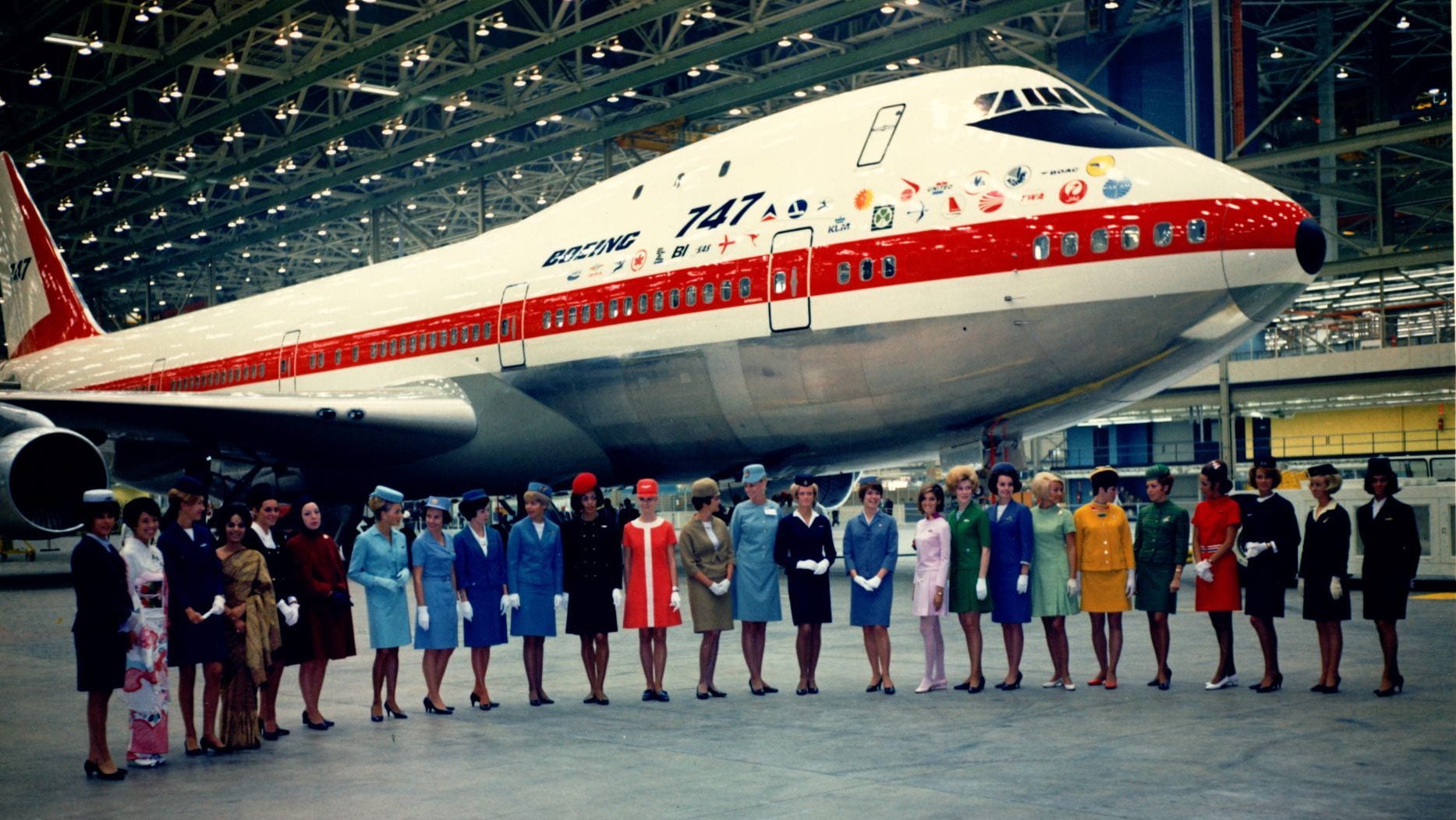
Comment